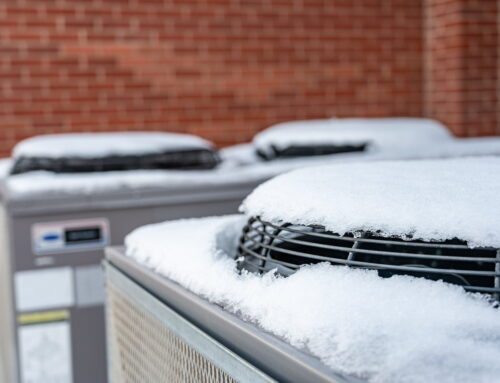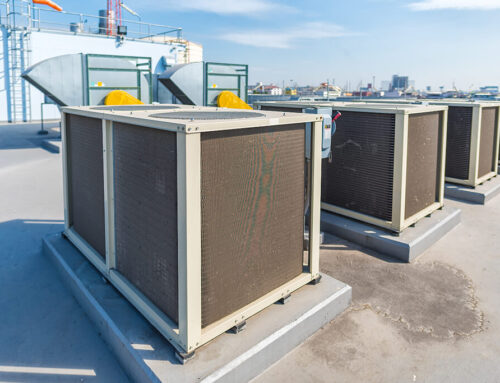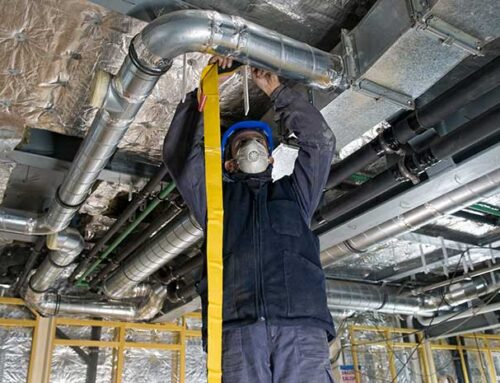Did you know that a well-maintained HVAC system can reduce energy costs by up to 20%, improve indoor air quality, and enhance humidity control and insulation for a better indoor environment? Yet, many businesses overlook the importance of evaluating their commercial HVAC systems regularly for indoor air quality, outdoor air integration, humidity control, and reducing energy waste. It’s not just about staying cool in summer or warm in winter; it’s about ensuring your system runs at peak efficiency, reducing energy consumption, saving on your energy bill, minimizing energy waste, and reducing environmental impact through better insulation. From understanding energy consumption patterns to identifying areas for infrastructure and insulation improvement projects, we’ll dive into how you can assess your system’s performance and output effectively. Let’s cut through the complexity and make sure your HVAC, with accessible access doors and optimized for each room, is working for you by reducing energy consumption and your energy bill, not against you.
Understanding Commercial HVAC System Efficiency Ratings
Key Ratings
SEER, EER, and IEER are critical in evaluating your commercial HVAC system’s efficiency, energy consumption, and infrastructure. SEER, or Seasonal Energy Efficiency Ratio, measures the cooling output in BTU during a typical cooling season divided by the total electric energy input in a commercial HVAC system for a commercial building. The higher the SEER rating, the more efficient the system is in reducing energy consumption in a commercial building.
EER stands for Energy Efficiency Ratio. It calculates efficiency at peak operating times. This rating is crucial for understanding how well your commercial HVAC system performs under extreme conditions in terms of energy consumption in a commercial building.
IEER, Integrated Energy Efficiency Ratio, provides a broader picture of efficiency over varying operating conditions for commercial HVAC systems in commercial buildings. It considers part-load performance and full-load performance of commercial HVAC systems in commercial buildings to give a comprehensive efficiency score, including energy consumption.
Impact on Costs
Efficiency ratings directly affect energy consumption and cost savings. Higher-rated building systems use less power to achieve desired temperatures. This means lower electricity bills for the building and significant cost savings over time with a commercial HVAC system.
For instance, upgrading a commercial HVAC system in a building from an older model with lower SEER to one with a higher rating can reduce energy costs substantially.
Evolution of Standards
Efficiency standards for buildings have evolved significantly over time to address environmental concerns and reduce operational costs.
In recent years, regulations have become stricter, pushing manufacturers to develop more efficient systems. This evolution benefits businesses by providing more options for reducing their carbon footprint and saving money on energy bills through building efficiency.
Understanding these ratings helps building owners make informed decisions about their HVAC investments. It’s not just about compliance; it’s about choosing building systems that offer long-term savings and sustainability benefits.
Measuring CSER for Commercial HVAC Systems
CSER Defined
CSER, or Commercial Seasonal Energy Efficiency Ratio, is crucial. It measures a system’s efficiency over a season. Think of it like the MPG (miles per gallon) for your car but for your building’s HVAC.
Calculating CSER involves understanding how much cooling output an HVAC system provides for a building over a season versus the total electric energy input during that same period. The higher the CSER, the better the efficiency.
Calculating Process
To calculate CSER for a building, you need two things: total cooling output and total electrical energy used in kWh. First, gather data on how much cooling (in BTUs) your system has provided to the building over a specific period. Then, look at how much electricity (in kWh) the building consumed to provide that cooling.
The formula looks something like this:
CSER = Total Cooling Output (BTU) / Total Electrical Energy Input (kWh)
This calculation requires accurate data tracking and might involve consulting with professionals to ensure precision.
Benchmarking Efficiency
Once you have your CSER value, compare it to industry benchmarks. These benchmarks vary by region and type of commercial building but give you an idea of where your system stands.
-
Above benchmark: Your system is performing efficiently.
-
Below benchmark: There may be room for improvement or maintenance issues to address.
For example, if most commercial buildings in your area aim for a CSER of 6 and yours is at 5.5, it indicates potential inefficiency needing attention.
Significance of BTUs in HVAC Systems
Understanding BTUs
BTU stands for British Thermal Unit. It measures the energy needed to heat or cool one pound of water by one degree Fahrenheit. This metric is crucial in sizing HVAC units correctly.
Sizing an HVAC system isn’t just about picking the biggest unit you can find. A unit too large will cycle on and off too frequently, wasting energy. Too small, and it won’t keep up with demand, leading to discomfort.
Cooling and Heating Capacity
The cooling and heating capacity of an HVAC system directly relates to its BTU rating. More BTUs mean more power to change air temperatures quickly.
For cooling, a higher BTU rating means the system can remove more heat from your space per hour. In heating, it’s about adding warmth efficiently. But remember, bigger isn’t always better.
Misconceptions About Efficiency
There are common misconceptions that more BTUs always mean better efficiency. That’s not true.
-
Higher BTU ratings increase power but not necessarily efficiency.
-
Efficiency depends on matching size to space needs.
-
An oversized unit may lead to quick cycling, reducing lifespan and increasing costs.
Non-Technical Methods to Measure Commercial HVAC System Efficiency
Utility Bill Analysis
Utility bills are a straightforward way to check your HVAC’s efficiency. A sudden increase in these bills often signals inefficiency. Compare your current bills with those from the past. Look for patterns of change during different seasons.
A steady rise over months can mean it’s time for a system checkup or upgrade. This method doesn’t require technical knowledge but offers valuable insights into your system’s performance.
Occupant Comfort Feedback
Listening to what occupants have to say is crucial. Are they too hot or too cold? Complaints about comfort levels can indicate that the HVAC isn’t working as it should.
Gather feedback regularly through surveys or meetings. If many people report similar discomfort, this points toward an inefficient system needing attention.
Visual Inspections
Regular visual checks help spot problems early on. Look out for leaks, strange noises, or anything out of the ordinary around vents and equipment.
These signs could suggest inefficiencies within the system that need fixing. Catching issues early by visual inspection can save money and ensure consistent performance without needing complex measurements tools like a chilled mirror hygrometer.
Comprehensive Guide to Conducting HVAC System Analysis
Steps Overview
To ensure your commercial HVAC system runs efficiently, a detailed evaluation is crucial. Start by scheduling regular check-ups. Technicians can spot issues before they worsen.
Next, review energy bills for unusual spikes in usage. This could signal inefficiencies. Use these insights as a benchmark for improvement after adjustments are made.
Airflow Measurement
Airflow is the lifeblood of an HVAC system. Poor airflow leads to uneven temperatures and increased strain on the unit. Use an anemometer to measure airflow speed at various vents throughout the building.
Check for blockages or leaks in ductwork during this process. Even small leaks can significantly reduce efficiency.
Ductwork Inspection
Inspecting ductwork goes hand-in-hand with measuring airflow. Look for signs of wear and tear, such as holes or disconnected sections. Seal any gaps with mastic sealant or metal tape but avoid using duct tape as it deteriorates quickly.
Consider hiring professionals if your building has extensive ductwork. They have tools and expertise that can provide a more thorough inspection.
Thermal Imaging
Incorporate thermal imaging into your analysis to identify hidden problems. This technology reveals areas where insulation may be failing or where there are leaks not visible to the naked eye.
Thermal cameras pinpoint exact spots needing attention, making repairs more targeted and effective.
Maximizing Energy Efficiency in Commercial Building HVAC Systems
Thermostat Optimization
Optimizing thermostat settings is a key strategy. It significantly reduces energy consumption in commercial buildings. By setting the thermostat to adjust automatically during off-hours, energy waste decreases.
For example, increasing the temperature by a few degrees when the building is unoccupied can save on cooling costs. Similarly, lowering it slightly during winter nights contributes to heating savings. These small adjustments can lead to noticeable reductions in your energy bill.
Regular Maintenance
Regular filter changes are crucial for maintaining efficiency. A dirty filter restricts airflow and forces the system to work harder. This increases energy costs unnecessarily.
Duct sealing also plays an important role. Leaks in ductwork allow conditioned air to escape, leading to increased energy use and discomfort in certain areas of the building. Sealing these leaks enhances overall system performance and comfort while reducing expenses.
Energy Recovery Ventilators
Implementing Energy Recovery Ventilators (ERVs) is another effective measure. ERVs recycle energy from exhaust air to precondition incoming fresh air. This process drastically lowers the load on your commercial HVAC system, cutting down on watts used.
-
Pros:
-
Reduces heating and cooling demands
-
Lowers overall wattage consumption
-
Cons:
-
Initial installation cost
Preventive Maintenance Strategies for Improved Efficiency
Routine Schedules
Routine maintenance is vital. It keeps your HVAC system running smoothly. A schedule helps avoid sudden breakdowns.
You should check the system regularly. This means looking at components and testing their performance every month. A well-planned routine saves time and costs in the long run.
Cleaning Coils
Cleaning coils is crucial for efficiency. Dirt on coils hampers performance, increasing energy use.
This task should not be overlooked during maintenance checks. Clean coils mean better airflow and reduced expense on energy bills.
Component Replacement
Worn components slow down your system. They make it work harder than necessary, raising costs.
Replacing these parts promptly can prevent bigger issues later on. Access doors, filters, and belts are common items that need regular inspection and replacement.
System Analytics
Monitoring analytics is a smart move. It gives early warnings about potential problems.
Implementing Smart and Sustainable Solutions for HVAC Systems
Smart Thermostats
Smart thermostats are a game-changer for HVAC systems. They let you control the temperature from anywhere using your phone or computer. This means no more worrying if you forgot to adjust the thermostat before leaving home.
By learning your schedule, smart thermostats ensure comfort when you’re home and savings when you’re not. Studies show they can save up to 10% on heating and cooling bills.
Renewable Energy
Integrating renewable energy with your HVAC system is another step towards efficiency. Solar panels, for example, can power units, reducing reliance on traditional electricity sources.
This integration not only lowers bills but also decreases carbon footprint. It’s a win-win for both the environment and building occupants.
Low-GWP Refrigerants
Transitioning to low-GWP (Global Warming Potential) refrigerants is crucial for environmental protection. Older refrigerants contribute significantly to global warming when leaked into the atmosphere.
Low-GWP options provide similar cooling effects without harming the planet. This shift shows commitment to sustainability while maintaining indoor air quality and comfort.
Closing Thoughts
Evaluating the efficiency of your commercial HVAC system is like giving your building a health check-up. You’ve got the tools and knowledge—from understanding efficiency ratings and BTUs to implementing smart solutions and preventive maintenance. It’s all about keeping the system in top shape while cutting costs and carbon footprints. Think of it as hitting two birds with one stone: saving the planet while saving some cash.
Now, it’s your move. Roll up your sleeves and dive into assessing your HVAC’s efficiency. Don’t let it be an afterthought. Regular check-ups and smart upgrades can turn your system from a gas-guzzler into a lean, mean, green machine. Ready to make that change? Your building (and wallet) will thank you later.






